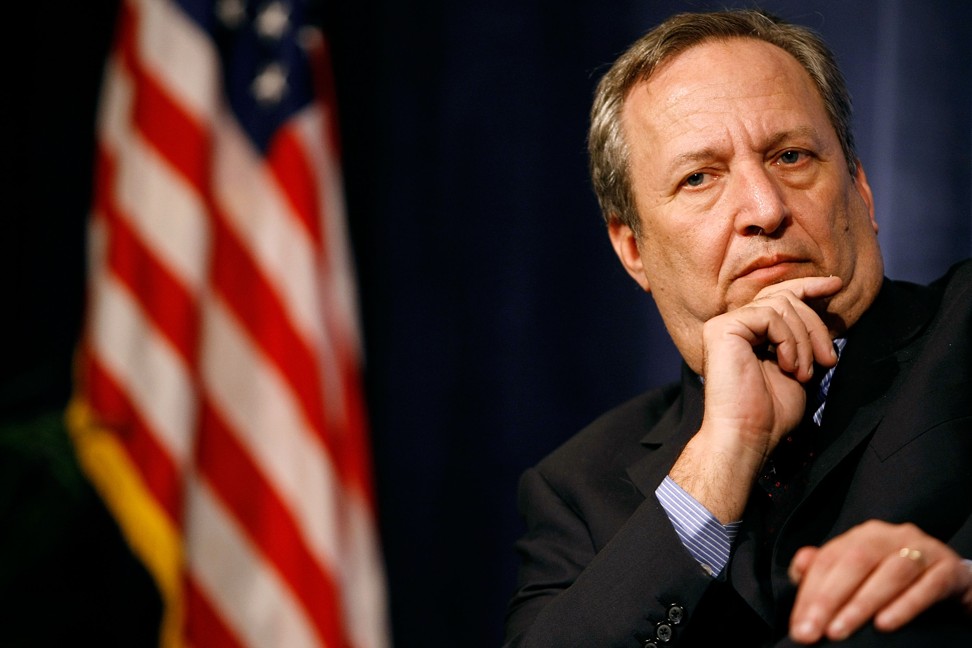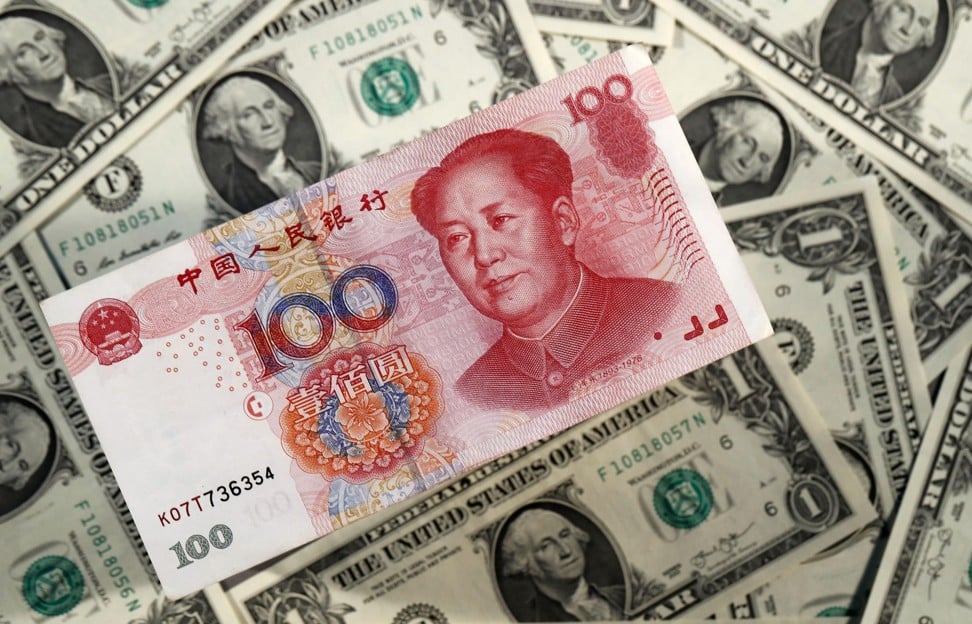Global financial crisis, recession risks raised as US-China trade war tensions escalate over currency row
By Karen Yeung From South China Post

- Former US Treasury Secretary Lawrence Summers says world at the ‘most dangerous financial moment’ since the 2009 global economy meltdown
- Washington labelled China a ‘currency manipulator’ after the yuan exchange rate dropped to its lowest rate for 11 years on Monday
The global stock market rout deepened on Tuesday after the United States tagged China as a currency manipulator, fuelling analysts’ fears that the rapid escalation in trade tensions could spiral into a sharp global financial crisis and economic downturn.
“We may well be at the most dangerous financial moment since the 2009 Financial Crisis with current developments between the US and China,” former US Treasury secretary Lawrence Summers tweeted on Tuesday.
Summers warned that with the collapse in global medium and long-term interest rates, markets are now suggesting “only slightly less than” a 50 per cent chance of a recession over the next year, the highest level of risk since 2011.
Yields on US 10-year Treasury bonds have tumbled to 1.74 per cent, and may possibly test their low of 1.43 per cent reached in 2012, in the aftermath of the global financial crisis, as soon as this week.


“We may well be at the most dangerous financial moment since the 2009 Financial Crisis with current developments between the US and China,” former US Treasury secretary Lawrence Summers tweeted on Tuesday. Photo: AFPShare:
The tumble in the world’s stock markets has only exacerbated the risk, with a sell-off in Asian stocks continuing on Tuesday and European markets also down in early trade.
Yu Yongding, a senior Chinese government adviser, said that there were risks of a global recession even without the US-China trade war, and that the recent escalation of the conflict clearly amplifies those risks.
US President Donald Trump accused Beijing of not making sufficient concessions in the latest round of talks last week in Shanghai and on Friday, threatened to impose a 10 per cent levy on US$300 billion worth of Chinese imports, starting on September 1.
Labelling China a currency manipulator also opens the door for the US to eventually increase the level of the next round of tariffs to more than 25 per cent, analysts said.
“This has a lot of ramifications. Most obviously, it makes a trade deal unlikely any time soon, especially after it was reported that Chinese companies have been told to halt imports of US agricultural products,” said Nick Wall, a portfolio manager at Merian Global Investors.Given that US economic activity seemed to be peaking, the recent escalation of trade tensions could provide a big shock to the US and global economies, said Martin Arnold, an economist at Schroders.
David Plank, head of Australian economics at ANZ, said one major potential source of stress in the global financial system comes from the fact that US companies are more highly indebted now than they were during the financial crisis.


The trade war is turning into a currency war, with both China and the United States trading barbs about manipulation and protectionism on Tuesday. Photo: KyodoShare:
Commercial banks’ balance sheets are much safer since the financial crisis a decade ago thanks to regulatory reforms, Plank added, but that also means their capacity to borrow has also been pared back significantly.
So one risk is that credit markets “dry up” in a downturn and lead greater price volatility, he added.
“It remains to be tested if that could be a real source of stress if we had pressures in credit markets,” Plank said. “The trouble is, if things turned out especially poor and everybody tries to deleverage at the same time, then you might get a problem.”
A weaker yuan will make Chinese exports cheaper for foreign buyers, potentially offsetting the impact of the new US tariffs. The 10 per cent tariff on US$300 billion of new Chinese exports means a US$30 billion “loss”, which could be offset by a 6 per cent depreciation of the yuan, according to Rabobank analyst Michael Every.
However, Christopher Balding, an analyst with research network SmartKarma, warned that one major consequence of a weaker yuan is that it will raise China’s borrowing costs. China has large US dollar-denominated debt in absolute terms as well as in relation to the level of its foreign exchange reserves, Balding said, with external debt at roughly 65 to 70 per cent of foreign exchange reserves. China exported roughly US$500-600 billion to the US last year, but has US$2.2 trillion in external debt.
Rabobank analyst Every noted that Chinese property developers have borrowed heavily in US dollars and were therefore a cause for concern. He added that other emerging market economies have also borrowed heavily in US dollars, which could be an issue if their currencies tumble against the dollar alongside the yuan.
“And [I] worry about global trade flows, as a stronger US dollar rumbles through the real economy and the US-China divorce smashes supply chains,” Every said. “China is taking such a risk [with the exchange rate] at the same time as there is resistance against Huawei, against the Belt and Road [Initiative], and against its claims to the South China Sea, to say nothing of Hong Kong, which points to the stress it is under and the cul-de-sac it finds itself in.”
Schroders’ Arnold said that new investments are being scaled back under pressure from trade uncertainties, raising the risks of a US recession along the lines of those in 1998 or 2001.
That obviously opens the door to the nightmare scenario of a downward spiral in the Chinese currency and simultaneous upwards spiral in US tariffs.Michael Every, Rabobank
There are some similarities between 1998 and the current environment: depressed consumer and business sentiment against a backdrop of a central bank supporting economic activity,” Arnold said.
“Industrial activity posted significant declines [in 2001] and there was a build-up of what was later found to be excess inventories which was followed by declining [capital expenditures] – again echoes of the current environment.”
Analysts warned the market still does not fully reflect the latest escalation in US-China trade tensions, and as the effects of tit-for-tat measures hold, sentiment may worsen before any sort of trade truce emerges, if it ever does.“That obviously opens the door to the nightmare scenario of a downward spiral in the Chinese currency and simultaneous upwards spiral in US tariffs,” Every said. “[It is] all too possible under the ‘cold war scenario’ I believe is playing out between the US and China.”





